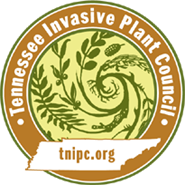Carduus acanthoides L.
Bristly Thistle, Curled Thistle, Plumeless Thistle, Spiny Plumeless Thistle| Category |
|---|
| Forb/Herb |

Description
Height
Spiny Plumeless Thistle grows to 5 feet. (1.5 m).Stem
Flower stems are branched with spiny wings extending to the flower heads.Leaves
The leaves are deeply lobed to pinnatifid, up to 9.8 inches (25 cm) long and 3.15 inches (8 cm) wide, the midrib beneath covered with long, soft hairs.Flowers
Flower heads are red to purple in color and up to 1 inch (2.5 cm) in diameter. Flower stems are branched with spiny wings extending to the flower heads. Flowering occurs from May to August.Fruit
One-seeded fruit (achene), capped by a ring of bristles.Images
Photo: Gary L. Piper, Washington State University, Bugwood.orgMore images of Carduus acanthoides
Life History
Spiny plumeless thistle, also called plumeless thistle, is a winter annual or biennial herbaceous plant that grows to 5 feet. (1.5 m) tall, it is a member of the Asteraceae family. Seedlings emerge from early spring to late fall and the length of time to flowering can vary from 4 to 22 months. A single taproot is formed and stem elongation takes place in early May. Reproduction is solely by seed. Hybridization with musk thistle has been observed.Plumeless thistle can be distinguished from nonnative musk thistle (C. nutans) by the leaf-like spines on the stem, and hairs on the underside of the leaf. Plumeless thistle flower heads are 1-2 inches in diameter, about one-third the size of musk thistle flower heads.
Habitat
Spiny plumeless thistle infests open, disturbed areas such as pastures, roadsides, and railroad right-of-ways. It can form dense stands that reduce the forage potential of pastures and suppress the growth of more desirable vegetation.Origin and Distribution
It is native to Europe and Asia and was first discovered in the US in Camden, New Jersey in 1878. It is an invader of pastures and other disturbed areas throughout parts of the western, central, and northeastern US, as well as southern Canada. Seeds are mainly dispersed by wind.Other States Where Invasive: AZ, CA, CO, ID, MD, MI, MN, NC, NE, OR, SD, WA, WV, WY.
Federal or State Listed as Noxious Weed, Prohibited, Invasive or Banned: AZ, AR, CA, CO, IA, MD, MN, NE, NC, OR, SD, WA, WV, WY.
Sources
Feldman, S.R. 1997. Biological control of plumeless thistle (Carduus acanthoides L.) in Argentina. Weed Science, 45:534-537.L. T. Kok and A. Gassman In: Van Driesche, R., et al.., 2002, Biological Control of Invasive Plants in the Eastern United States, USDA Forest Service Publication FHTET-2002-04, 413 p.
Whitson, T.D.(ed.), L.C. Burrill, S.A. Dewey, D.W. Cudney, B.E. Nelson, R.D. Lee, R. Parker. 1996. Plumeless thistle. Weeds of the West. Western Society of Weed Science, in cooperation with the Western United States Land Grant Universities Cooperative Extension Services, Newark CA. pg. 74.
Wisconsin Department of Natural Resources. 1998. Musk or Nodding Thistle (Carduus nutans), Plumeless or Bristly Thistle (Carduus acanthoides), and Bull Thistle (Cirsium vulgare). Factsheets available at http://www.dnr.state.wi.us/org/land/er/invasive/factsheets/thistles.htm
